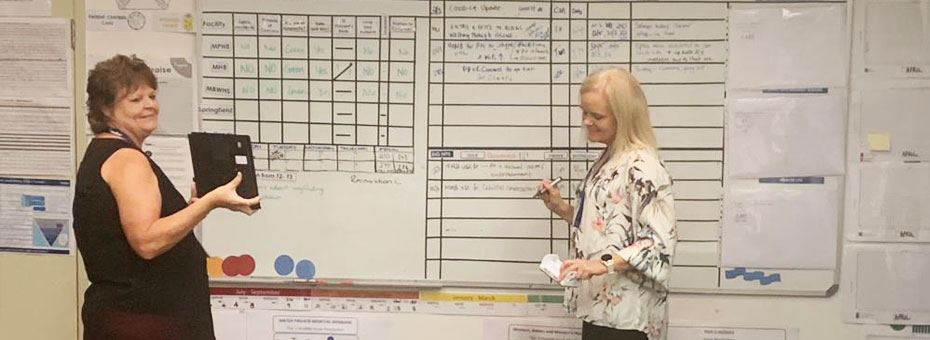By Cristina Adalid Fontcuberta, Flávio Battaglia, Denise Bennett, Oriol Cuatrecasas, Alice Lee, Dr Carlos Frederico Pinto and Dr Javier Sala Mercado.
Lean Thinking can lead to great results very quickly — which is what healthcare organizations around the world need right now. While lean transformations can take years to complete, they are accomplished by taking immediate action, day after day, to address new challenges as they arise. The Global Lean Healthcare Initiative, a team of lean practitioners and coaches, shares a set of tips hospitals can use today to support thier battle against Covid-19
This post is part four of a seven-part series. For more quick tips developed at the hospital gemba by lean healthcare professionals, see the first three parts:
Part 1: Designing the Patient Flow to Fight Covid-19
Part 2: How Hospitals are Leveraging Visual Management in the Battle Against Covid-19
Part 3: Creating Standardized Work to Ensure Safety, Quality, and Efficiency
Part 4. Engage in short, structured communication cycles
- Implement a daily management system to structure periodical meetings, short in duration, at all management levels as a way to prepare people for the specific situation of a shift or day. Hold these huddles in each work stream. The huddles may be virtual if teams are segregated.
- Create visual boards to act proactively and preventively by visually anticipating important decisions in the face of difficulties, which will change every day.
- Encourage people to communicate problems, difficulties and opportunities for improvement at all times.
- Enable better communication by always working in teams.
EXAMPLE 1 – AUSTRALIA The Daily Management System in use in this hospital has been critical to ensure that front-line teams engage daily in conversations about their concerns. We have increased the focus on front-line huddles to create more structure and collect concerns, feedback and critical information every day. The ward huddle is now split into two: safety huddles at the start of the shift (duration of 5 minutes) and top-tier leaders’ huddles to close the loop of information and respond to team members’ concerns. This creates a time for the teams to reset and connect during these stressful work days. Huddles have proven such an important part of communication and supporting each other. The team had to redesign huddles to keep staff safe and adhere to the social distancing requirements using a combination of technology and visual marks on the floor to help us maintain the social aspects of the huddle process.
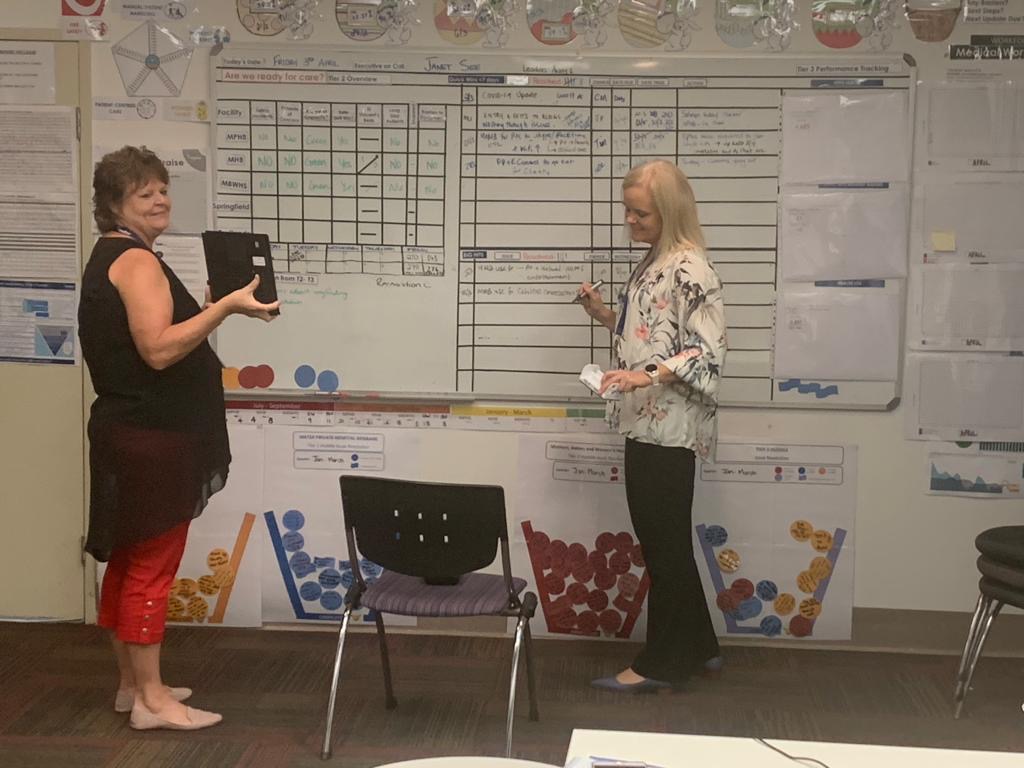
EXAMPLE 2 – SPAIN The panel in use at the “command center” in a Catalan hospital, with different colors referring to different areas tackling the Covid-19 emergency. The board is updated daily/weekly as the situation evolves.
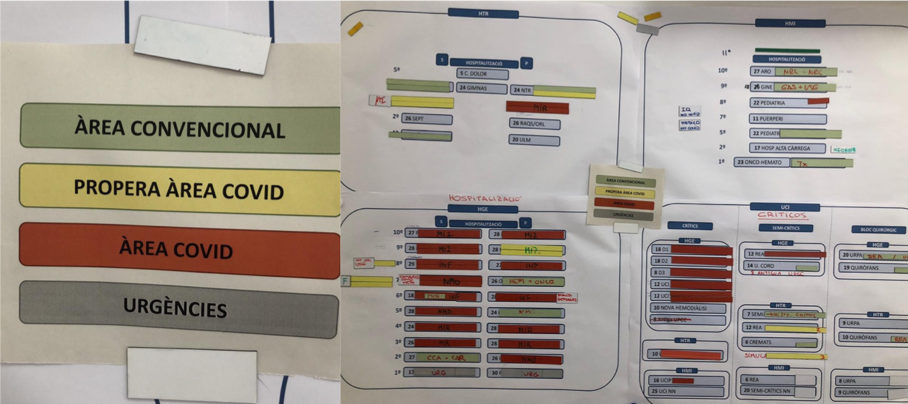
EXAMPLE 3 – SPAIN These symbols are used to visually identify Covid-19 positive patients and those awaiting test results. The star sign indicates the patient’s family has been informed.
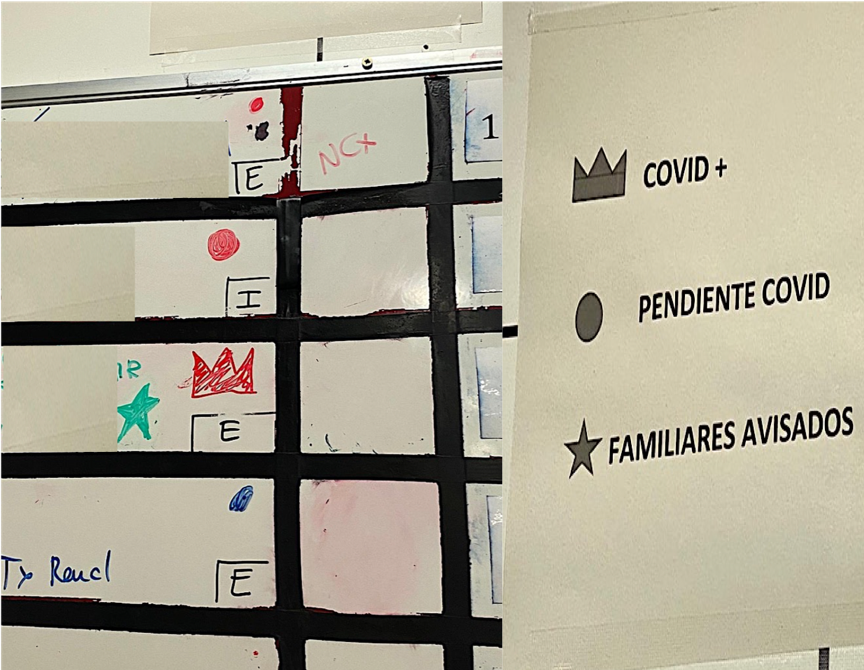

A Quick Tip to Speed Problem-Solving from Perfecting Patient Journeys
Identify underlying cause(s) of the contributing problems.
To identify most likely potential direct causes, you can use problem-analysis tools, such as fishbone diagrams, cloud diagrams, or problem-analysis trees (see cloud diagrams below). These tools help you evaluate the most likely causes and their relative contribution to the problem. Further analysis will help you refine your understanding of the causes and set priorities for action.
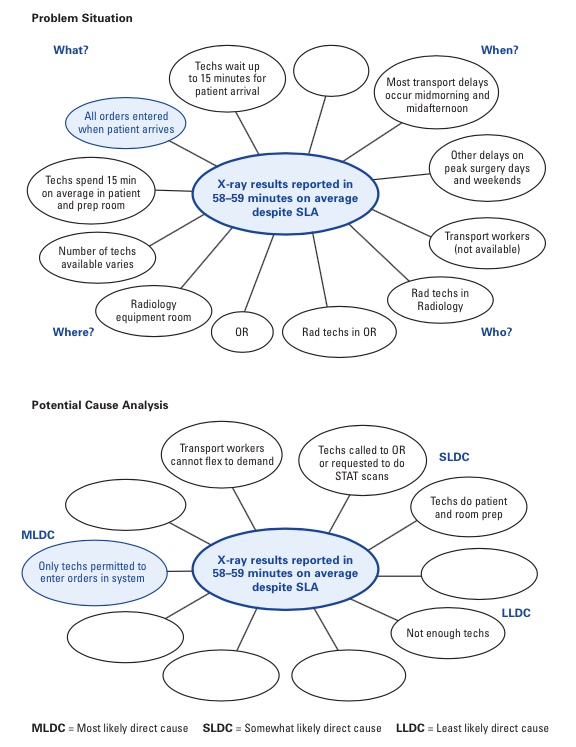
We suggest you start with a cause that provides the biggest potential return on your investment of time and effort or that which provides the best chance for quick success. Regardless of whether you use such tools, you may want to take another trip to the gemba to validate the potential causes.
